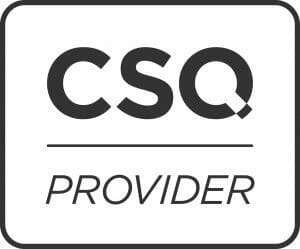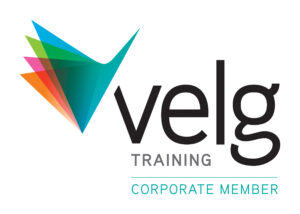What Crane Tickets or Licences do I Actually Need?
Working around cranes and lifting equipment requires qualified workers, and these subsequent qualifications are essential to reducing accidents and injuries while you’re on site.
There are several different types of courses and licences available depending on the kind of career you want to pursue, including;
– Crane Operator Licence (vary based on the specific type of crane you’ll be operating)
We will discuss the various pathways and courses you can take below to achieve the qualifications (and licences) that are needed for working safely and efficiently around cranes.
Being qualified is not just critical to crane work, but also the extent of your qualifications can increase your chances of better employment opportunities, your earning potential and getting a promotion down the track.
First up: complete a dogging course
A dogger is responsible for safely slinging the load and directing the crane operator with whistle/hand signals.
A dogging course will equip you with the skills and expertise to efficiently sling loads and direct crane operators in various situations. This is in addition to adhering to WHS Standards and Regulations.
Having adequate dogging training will help you understand and conduct basic dogging tasks – both in and out of the crane operator’s gaze and with the intent of adjusting and shifting loads.
The course includes information such as; which slings and straps to select, how to assess the size of a load and preserve its stability and how to assist the crane operator when they can’t see their load.
Progress to a rigging qualification
Riggers are proficient in dogging, but have additional knowledge and responsibilities, including helping to erect and dismantle cranes on site. Riggers use rigging machinery like pulleys, cranes, and hoists to support and transport hardware around construction sites. They also erect temporary works, such as cranes and structures on building sites, as well as relocating and erecting precast structures.
Some of their other responsibilities include:
– Estimating object sizes and weights for movement and allocating the most suitable machine for the task
– Erection of mobile crane booms and adjustment of the tower crane heights
– Lifting, positioning and bolting together equipment
– Attaching slinging equipment to the load that needs hoisting
– Using cables, winches, ropes, pulleys, and other lifting equipment
– Equipment inspection, maintenance, and repair
– Lifting or erecting steel members or prefabricated concrete panels
To qualify to become a rigger, you need:
– A construction induction card (white card)
– A dogging licence
– Rigging license (after receiving training from a registered training organisation like Kallibr Training RTO 32365). Note that you can complete basic, intermediate or advanced rigging courses, depending on the kind of work you wish to undertake.
– Depending on the job site, you might also need to complete other additional licenses such as a working at heights ticket or other high risk work licenses.
Different Types of Crane Licences If You Want to Operate Cranes
To become a crane operator, you’ll need to do a specific course and get your license.
Because of the dangers of working with a crane without proper training, you must do this training and apply for a crane license, which is specific to the type of crane you’ll be operating. Some common crane operator courses include:
This course covers the requirements for operating a crane mounted to a vehicle for loading and unloading the vehicle. After successfully completing this course, you will be able to operate any vehicle loading crane (such as Hiab’s and Palfinger’s) that have a lifting capacity under 10 tonnes.
This course covers the required skills and knowledge for proficiently and confidently operating a vehicle mounted crane (CV) – specifically for the purpose of loading and unloading vehicles (like Hiab’s and Palfinger’s).
The cranes are designed with a lifting capacity of 10 metric tonnes of above, and the content is taught in accordance with Safe Work Australia’s National Standard for performing high risk work.
This course covers all the requirements for obtaining a national High Risk Work Licence (Class CN) for non slewing mobile with a capacity greater than three tonnes.
A non slewing crane means a mobile crane (greater than three tonne capacity) that incorporates a boom or jib that cannot be slewed, such as articulated type mobile cranes, locomotive cranes, non-slewing telehandlers (>3 tonnes, fitted with a boom and/or jib with a hoist rope and/or hook block). It does not include vehicle tow trucks.
This course covers all knowledge and skills needed for obtaining a national High Risk Work Licence (Class C1) for slewing mobile cranes with a maximum lifting capacity of up to 100 tonnes.
Upon successful completion, you will be able to operate any mobile cranes (up to 100t) as well as any non-slewing cranes (such as telehandlers or Franna cranes) and vehicle loading cranes and reach stackers within Australia.
Note: You’ll need to get the plastic wallet card High Risk Work (HRW) license after you’ve completed the necessary qualifications – this can be obtained from your local WHS authority such as WorkSafe Vic, WorkSafe QLD or Safe Work NSW.
What Does a Crane Operator Do?
Crane operators are trained to operate (specific type/s) of cranes which are used to hoist equipment (often vehicles) and materials around the worksite/warehouse. They also control movement platforms that transport people to various heights at sites so they may more effectively and easily perform their specific duties (as needed).
The job of crane operator is not isolated to just being in the crane. Crane operators also need to carry out planning and preparation, maintenance and repair tasks on crane equipment and keep up documentation (such as updating the log and records of what was moved and when).
Cranes are generally required for larger-scale construction projects such as high-rise buildings and major commercial/industrial and government infrastructure jobs. They may also be required in mines, quarries and companies with large, often busy warehouses.
Because not all cranes or licences to operate them are the same, you can choose your course and qualifications based on what you would most like to work with.
For example, some of the specialisation options for crane operation include:
– Dogman crane operator
– Rigger crane operator
– General crane operator
The Keys to Being a Successful Crane Operator
Almost anyone can become a successful crane operator with the right training! That being said, there are a few personal attributes that will help:
Being Safety Minded:
A key part of the role is centred around operating a crane (lifting and moving) as efficiently and safely as possible.
You will be dealing with high-risk machinery and heights, so being able to identify and avoid potential hazards is critical to keeping you and those around you onsite safe at all times.
The good news is you aren’t expected to just know this! Prior to receiving your accreditation, you will be taught everything you need in your specific crane operator course of choice.
Practically Minded:
As a crane driver, being practical and organised is a distinct advantage, since operating a crane requires a lot of attention and skill.
Stamina:
You may find yourself in the crane for many hours so being able to concentrate and stay focused is very important to avoid mistakes when operating the crane.
Enjoyment of a Worksite:
Unlike an office desk job, worksites change every day and are full of hustle and bustle. Crane drivers should feel comfortable in this busy environment. Even though they are responsible for operating the crane, they need to regularly communicate and direct others, respond quickly and be adaptable.
Get your high risk work training done with Kallibr Training
When deciding which certification is right for you, think about the type of work you’d like to do and which equipment best suits those circumstances.
Kallibr Training specialises in offering realistic training environments for its students. We offer both a dogging course and rigging training courses as well as a range of different crane operator courses in NSW and QLD.




